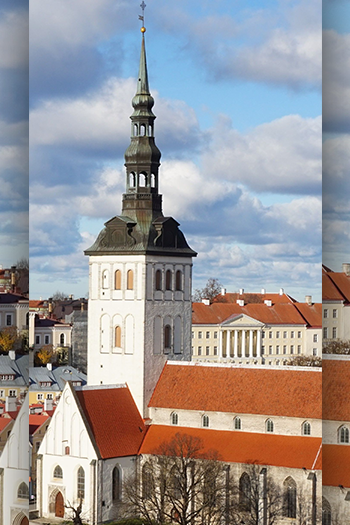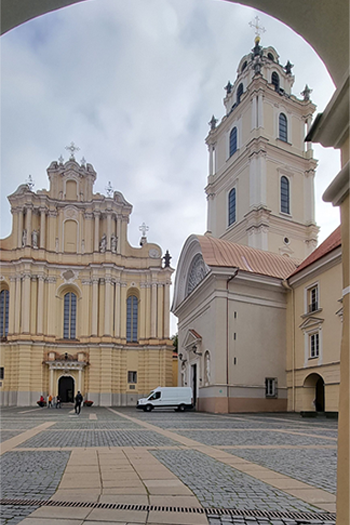Gallery
Information will ready soon…
RESEARCH, RESTORATION AND URBAN CONSERVATION PRACTISES
(since inscription into the UNESCO World Heritage List)

– Highest quality, exemplary research activities and findings
– Most important conservation and restoration works performed
– The newest tendencies and policies of site‘s maintenance and management
Earlier records and studies concerning the archaeology of Tallinn Old Town and the restoration of monuments are preserved in Tallinn City Archives, the National Heritage Board and Tallinn Culture and Heritage Department. In particular, the research done on Tallinn Old Town by the National Institute of Restoration of Cultural Monuments is impressively large-scale and in many ways still applicable. The studies by Villem Raam, Helmi Üprus, Teddy Böckler et al., of single monuments and Tallinn Old Town as a whole, have served as the foundation for a number of later studies.
Archaeology
The first excavations involving archaeologists were carried out at the end of the 1970’s in connection with the restoration of monuments and the digging of ditches. Therefore there is a substantial body of fieldwork reports, and an abundant collection of findings from different periods in the history of the Old Town currently displayed in museums. Special mention should be made of the representative collection of 18th-century glass and porcelain unearthed during the restoration of 29 Lai Street. In the middle of the 1990s, the volume of archaeological research increased considerably due to the implementation of archaeological research requirements in the buffer zone of Old Town.
Upon the initiative of the City of Tallinn the most extensive rescue-archaeological excavation to that date was carried out in 2008-2009, prior to the construction of the Vabaduse (Liberty) Square parking lot. The excavation uncovered a number of rare findings from different periods, among them the remains of a Stone Age settlement dating back to 3000 BC. From a later period the remains of the Harju front gate tower were displayed on location as well as the majority of the supporting walls of the bastion moat. The former gate structures have also been marked in the newly built Vabaduse Square.
Town wall and bastions
A remarkable 1.85 km of town wall and 26 defence towers have been preserved, plus the so-called unacknowledged bits of the town wall hidden in walls of houses as well as underground. The development of military technology around 1530 caused a significant change in Tallinn’s defence systems, the outdated circular wall had to be strengthened by earthworks or bastions.
During the last decade Tallinn has restored and opened several towers of the Town Wall to the public, and restored and displayed a part of the defence passageways of the Swedish and Ingermanland bastions, offering a unique experience of time travel. The major project was the restoration of Neitsitorn (Virgin ҆s Tower) and Tallitorn (Stable Tower) and the reopening of the defence passageway from Neitsitorn to the tower of Kiek in de Kök. In recent years the Bremen tower was restored and the Fat Margaret tower was restored to house the new exposition of the Maritime Museum with the special showpiece of an unearthed mediaeval ship (2019).
Public buildings and privately owned houses
The restoration of the Town Hall by Teddy Böckler in 2005 it received the European Union Cultural Heritage award – the Europa Nostra medallion – as the most successful conservation project. The restoration of the Old Guild Hall for the new exhibition of the Estonian History Museum and the restoration of the House of the Brotherhood of Blackheads should be mentioned.
Places of worship (churches)
Many places of worship have been restored in Old Town within the framework of the Tallinn Church Renaissance Programme launched in 2000 with the purpose of renovating the most outstanding churches/cultural monuments and opening them to visitors. One of the priorities was the conservation of the interior decorations (altars, pulpits, paintings, icons, etc.). It is worth mentioning the ongoing restoration on the Cathedral of Virgin Mary with its interior decorations, especially the restoration and scientific research of the coats of arms (1998-2006) and the altar (2016-2017); the Church of the Transfiguration of the Lord (2006) and the conservation of the iconostasis (2001-2010); St John‘s church (2007-2009); St Olaf‘s church (since 2009); the Holy Ghost church (since 2003) with the research and conservation of the mediaeval Bernt Notke altarpiece (since 2019) and the restoration of the Ukrainian church.

